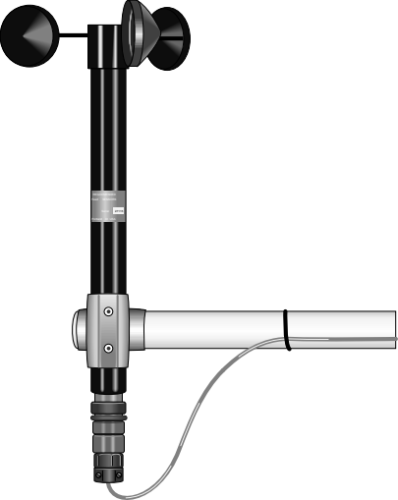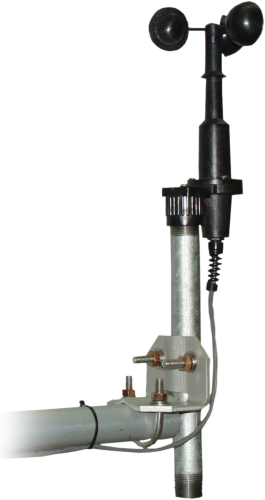Leading Features to Try To Find in a Reliable Anemometer for Accurate Wind Dimension
Leading Features to Try To Find in a Reliable Anemometer for Accurate Wind Dimension
Blog Article
All You Need to Learn About Anemometers: Exactly How They Function, Why They Issue, and Where to Use Them
Anemometers, though typically forgotten in the realm of scientific tools, play an essential function in numerous fields, supplying important insights right into wind rate and airflow patterns. As we delve right into the ins and outs of anemometer modern technology, we will certainly uncover the internal workings of these gadgets, their relevance, and the key considerations when choosing the best anemometer for particular applications.

Anemometer Essentials
A vital instrument utilized to measure wind speed and instructions, the anemometer plays an essential function in weather forecasting and various markets. An anemometer usually is composed of three or 4 mugs that rotate in the wind, a vane that directs into the wind, and sensing units to track the motions or rotations.
There are various sorts of anemometers readily available, including mug anemometers, vane anemometers, hot-wire anemometers, and sonic anemometers, each with its distinct attributes and applications. Cup anemometers are frequently used for basic wind speed dimensions, while vane anemometers are preferred for directional measurements. Hot-wire anemometers appropriate for reduced airspeeds, and sonic anemometers are perfect for high-precision dimensions in research study and commercial setups. Understanding the fundamentals of anemometers is important for accurate wind data collection and evaluation throughout various industries.
Principles of Anemometer Procedure
Structure on the fundamental understanding of anemometer fundamentals, the principles of anemometer procedure elucidate the technicians behind wind rate and instructions dimensions. Cup anemometers, for circumstances, have three or even more mugs that catch the wind, causing them to rotate quicker as the wind speed increases. Hot-wire anemometers count on a heated wire that cools down as wind passes over it, with the price of cooling identifying the wind rate.
Relevance of Anemometers
Anemometers play a critical duty in gauging wind rate and direction, offering vital data for climate forecasting, environment studies, environmental surveillance, and air travel procedures. Meteorologists depend on anemometers to gather accurate wind information, helping them understand climate patterns, forecast tornados, and concern prompt warnings to the public. Wind farm drivers use anemometers to assess wind problems and make the most of electrical power production from wind turbines.
Applications Across Numerous Industries
Applications of browse this site anemometers cover across varied markets, showcasing their adaptability and utility beyond weather forecasting. In the renewable resource sector, anemometers play an essential duty in examining wind conditions for wind ranch positionings, guaranteeing optimal energy manufacturing. Industries like construction and mining make use of anemometers check out here to monitor wind rates, vital for safety methods, particularly when working at elevations or in open-pit mines where solid winds can position threats. Anemometers are additionally essential in the aeronautics industry, helping pilots in comprehending airspeed and wind instructions for safe liftoffs and touchdowns. The maritime industry advantages from anemometers for ship navigation, assisting seafarers prepare for weather condition changes and change paths as necessary. In agriculture, anemometers aid farmers in managing crop splashing by offering real-time information on wind rate to avoid drift. Moreover, anemometers find applications in HVAC systems to enhance air flow and improve power efficiency in buildings. The varied use instances of anemometers underscore their value throughout different sectors, highlighting their essential function in boosting functional safety and security and performance (anemometer).

Picking the Right Anemometer for Your Needs
Choosing the proper anemometer customized to your specific demands is crucial for obtaining accurate wind speed find more info and instructions dimensions. When picking an anemometer, think about variables such as the intended application, needed measurement variety, ecological problems, and preferred attributes. For basic objectives, a mug anemometer appropriates for determining wind speed, while a vane anemometer provides wind instructions information. Hot-wire anemometers are ideal for low airspeed measurements, and ultrasonic anemometers provide high accuracy and longevity.

Conclusion
In final thought, anemometers play an important function in determining wind speed and instructions across various sectors. It is essential to consider the relevance of anemometers in order to make enlightened decisions when selecting the most ideal device for determining wind problems.
There are various kinds of anemometers available, including mug anemometers, vane anemometers, hot-wire anemometers, and sonic anemometers, each with its special features and applications. Cup anemometers are typically utilized for standard wind speed dimensions, while vane anemometers are preferred for directional measurements. Hot-wire anemometers are suitable for low airspeeds, and sonic anemometers are excellent for high-precision measurements in research study and industrial setups.Structure on the foundational understanding of anemometer fundamentals, the principles of anemometer operation elucidate the technicians behind wind speed and direction measurements. For general functions, a cup anemometer is appropriate for gauging wind rate, while a vane anemometer gives wind instructions information.
Report this page